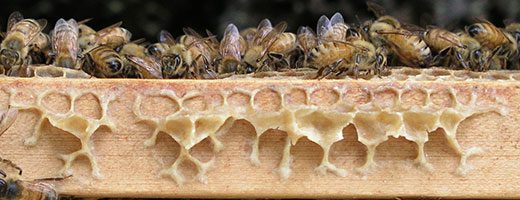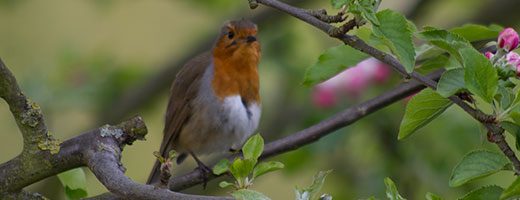On Nosema
Many years ago, I trained for what turned out to be a brief and fruitless career in teaching. One of the few things from that training that stuck to my reluctant mind was the guidance given on dealing with unruly classes. In broad terms, the advice was that a class should never be permitted to become unruly because, once it had, there was nothing to be done about it.
Beekeepers seeking advice on dealing with nosema will find themselves similary instructed. The NBU, for example, says roughly:
“Instead of using medicines for treatment of Nosemosis, beekeepers should maintain …strong, productive well-fed and disease tolerant colonies headed by young prolific queens. Bee keepers should also consider re-queening susceptible colonies with queens from more tolerant stocks of bees better able to cope with Nosema infection.”(1)
This is good, sound advice. And, given there is no medicine any more (the friendly-sounding Fumidil B having vanished, and being less than useless against Nosema ceranae (2) anyhow), it’s very nearly useful advice. But, for the beekeeper faced with a colony that’s failing to build up, or even dwindling, it lacks a degree of helpfulness.
It’s tempting to let the bees pursue their own destiny without interference in the hope that something, other than toes, will turn up. But this can create more problems than it solves. Failing colonies, even in cool weather, will attract other bees who might fancy a bit of robbing. And the bees of failing colonies might try to drift if better chances offer themselves elsewhere. We now also know that wild bees of other species are susceptible to, and can pick up, infections from honeybees (3), including Nosema ceranae and deformed wing virus (DWV), so it seems irresponsible to leave the bees to their own devices if we know there’s something wrong.
The best approach may be to close up infected colonies and destroy them. That would certainly be hygienic. But hygiene isn’t everything, and if we did that with every infection, there would be no opportunity for tolerance to evolve. Moreover, we know that Nosema doesn’t have a consistent effect. Colonies with apparently high infestations can recover, and those with low infestations can suddently collapse. Others can appear to recover, and then throw in the towel.
Nobody really knows why this is. One line of research has found that Nosema ceranae becomes more lethal in combination with one or more viruses (4) and, by implication, varroa. Though, happily, DWV and Nosema ceranae don’t seem to have a combined effect, at least in honeybees (5)
What we do know is that the bees in infected colonies won’t necessarily be infected to the same extent. To some that suggests our current method of assessing infection – which involves looking at a small sample of older bees – may give a misleading result one way or another. Although older bees may be more likely to be infected, those that can still fly might have avoided catching it badly. What seems to matter is the proportion of bees, young or old, that are infected, rather than the number of spores in a particular sample. But we can’t assess that without taking a large, random sample from throughout the hive and inspecting them individually and, even if we did, there’d still be no treatment.
However, the little we know does give clues to practical action we might take. If we’re trying to reduce the number of the spores circulating in the hive, reduce the opportunities for robbing/drifting and give the bees a fighting chance, then cleaning up seems a good idea. One thing, as I suggested last month, is to clear dead bees from floors regularly.
Hooper, in his Guide to Bees and Honey (6), suggests removing all the frames without brood on them, fumigating them with acetic acid, replacing them in the hive and then adding bees from a stronger colony. This seems a reasonable idea, but isn’t going to appeal to the beekeeper with just one colony, and acetic acid’s nasty stuff and hardly worth playing with just to save a few frames of possibly infected stores.
I’d suggest a more reasonable alternative would be to move a two or three brood frames to a nuc box with the queen and all the bees, fill the rest of the box with frames of foundation, feed heavily and keep the entrance small. Most of the stores and comb that may be harbouring spores can then be disposed of and the original hive scorched out and cleaned up properly. The bees may still perish but, in the meantime, at least you’ll have reduced the chances of the disease spreading, and you’ll have given them a fighting chance.
I’ve done this successfully only once, and maybe I was lucky. I fed syrup alone and it may be better with pollen-containing fondant, which would boost nutrition and reduce the need to forage. There are also some proprietary supplements and feeds that some beekeepers speak warmly of. But as so much depends on individual cases, and there are so many things that we don’t know, it’s impossible to be certain.
For the moment, it’s up to us to use our common sense, and the little bits of knowledge we’ve got, to do our best. The recent research into the spread of Nosema ceranae into bumble bees (3) is likely to concentrate minds. But as the authors of that report wrote:
“…it will be crucial to involve key stakeholders (for example, the beekeeping community, Bombus exporters) in any decision process, as any progress made will largely be driven by their actions.”
That means us. And it means that what we do now is as important as whatever’s decided we should do in future.
References
1. NBU Beebase, Nosema
https://secure.fera.defra.gov.uk/beebase/index.cfm?pageid=191
2. Wei-Fone Huang et al., Nosema ceranae Escapes Fumagillin Control in Honey Bees PLoS Pathogens DOI: 10.1371/journal.ppat.1003185 (2013)
http://www.plospathogens.org/article/info%3Adoi%2F10.1371%2Fjournal.ppat.1003185
3. M. A. Fürst et al., Disease associations between honeybees and bumblebees as a threat to wild pollinators. Nature 506, 364–366 (2014)
http://www.nature.com/nature/journal/v506/n7488/full/nature12977.html
4. Bromenshenk JJ et al., Iridovirus and Microsporidian Linked to Honey Bee Colony Decline. PLoS ONE 5(10): e13181. (2010)
http://www.plosone.org/article/info%3Adoi%2F10.1371%2Fjournal.pone.0013181
5. Stephen J Martin, et al., Do the honeybee pathogens Nosema ceranae and deformed wing virus act synergistically? Environ Microbiol Rep. 5(4), 506–510 (2013).
http://www.ncbi.nlm.nih.gov/pmc/articles/PMC3806273/
6. Hooper, Guide to Bees and Honey.





Recent Comments